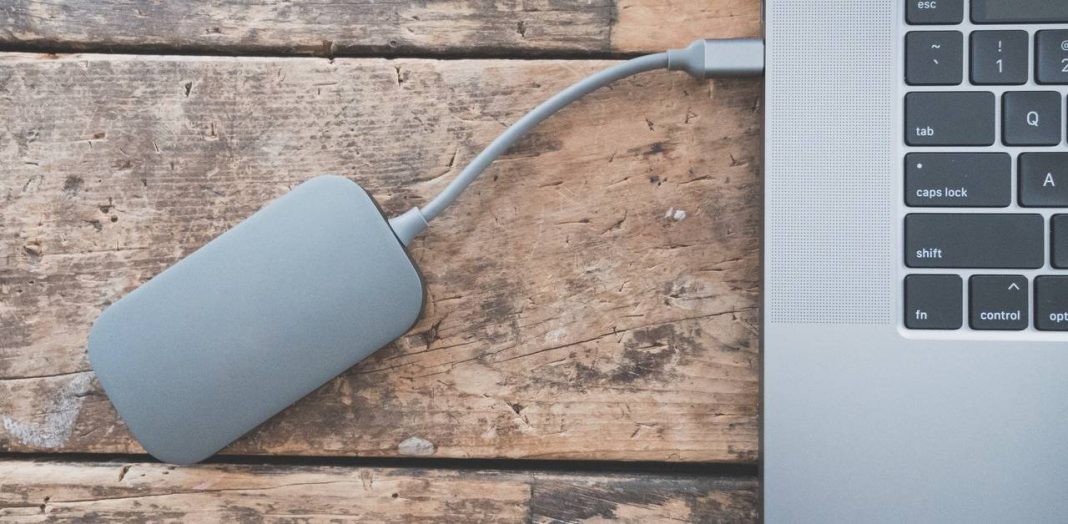UPDATED February 10, 2022 This piece has been updated to reflect the emergence of new technology


Christian Mathews Security Writer
Why would you want to know how to backup laptop to external hard drive? If you’re asking this question, you probably haven’t been a victim of data loss. According to ADR data recovery, businesses in the US alone lose more than $12 billion due to data loss each year. That’s quite an amount.Most businesses that go through this close shop soon after.
This may or may not strike a nerve to make you think about backing up your data. So here’s another shocker. Error on your part as the user accounts for at least 11% of the reasons leading to data loss. System failure, software corruption and natural disasters account for the other 86-89% of causes leading to data loss.
This means, despite your best efforts/practices to avoid data loss, other factors may lead to you losing your data, and there’s nothing you can do to prevent it. It’s never a question of how or why, but when.
1Why should you backup your computer?
Let’s put this bluntly, you have to. If any of your data/files mean as much to you. If you can’t afford to lose data on your computer, you just have to back up your computer. Data loss is inevitable.
So to prepare for this eventuality, you should know how to backup laptop to external hard drive.
2How many GB do I need to back up my computer?
It depends on the size of the data you wish to back up.
Backing up some of your documents, photos, videos etc. would require significantly lesser space compared to if you were to create a backup of your entire system.
On Mac, you can confirm how much storage space you need following these steps:
- Click on the apple menu icon at the top of your screen
- Click on the “About This Mac” option, then on “Storage”
- You can then check how much space has been used on your Mac to know the amount of space you’ll need to back up data on your Mac
On Windows, to know the amount of storage space you need, do this:
- Click on any folder, or windows explorer icon on the taskbar. Alternatively, you can click on “My Computer or “This PC” icon on the desktop.
- On the open folder, click on “This PC” or “My Computer”
- Right click on a drive C/ Local Disk, then select the “properties” option
- The tab that opens should show you the amount of space used on that drive, which you can infer to be the space needed to back up data on your Windows PC.
- If you happen to have partitioned your Local Disk/Drive C, repeat the same procedure, then add the amount space used in all drives in your computer. The final figure is the amount of space you’ll need to back up your data.
3How long does it take to back up my laptop?
This depends on the amount of data you’re backing up and also on the type of drive you’re using.
A full system backup will take more time, (even up to hours) while backing up some of your photos or documents will take just a few minutes. This should help in figuring out how to backup laptop to external hard drive.
4How to back up data
Backing up data on Windows 10
On windows, you have 3 options when it comes to backing up your data.
You can create a backup on an external drive, on a cloud account or on a shared network location.
Here’s how you can go about it:
- First, click on windows icon on the taskbar, or alternatively press the windows button.
- Next, click on the settings icon.
- In the tab that comes up, look for “Update & Security”. Click on it.
- In the next tab, click on “Backup”, then click on “Add a drive” (At this point, you should have plugged in the external hard drive, and when it comes up after windows has searched for drive, click on the preferred drive)
- Follow the next prompts, then let the backup utility finish the process before removing your external drive.
- Additionally, in the same tab, you can click on “Learn more about backup options” if you wish to back up your data to the cloud, or on a network location.
Backup Mac with external HDD
Just like with Windows, backing up data on Mac to an external HDD is fairly simple.
You can choose to store your data on iCloud or, you can create a data backup using Mac’s inbuilt utility, Time Machine.
Here’s how you can go about it using Time Machine:
- Click on the Apple icon at the top of your screen, then on “System Preferences” and finally on the “Time Machine” option.
- Alternatively, you can also click on the Time Machine icon, at the top of the screen, to open Time Machine.
- Once Time Machine has launched, click on the “Select Backup Disk” option.
- Choose the drive you wish to back up your data to, then select “Use”.
- At this point, you can also encrypt the drive to protect your data. To do this, you just need to click on the “Encrypt backups” option.
5Can any external HDD work on a Mac?
Yes. Any external HDD that works on Windows should be able to work on a Mac.
Provided you have the right cable (USB cable, firewire etc.) to connect the external HDD to your Mac, all you need is to format the external HDD.
6Conclusion
While you’re backing up your computer, it may be worth your while to know which is the best surge protector for your computer, so that you have further protection from your laptop getting damaged and losing that important data in the first place.
To summarize, we started with why it’s important to back up your laptop, all the way to how to actually go about the backup process both on Windows and Mac, and even clarifying on whether any external HDD can work with Mac.
What you’ll find out as you try backing up your data, is that there are always options you can explore when it comes to backing up data. In addition to backing up your data, you may want to consider how to encrypt hard drive, which will not only keep a back up of your data, but keep it safe from prying eyes.
Also, if you’re a non-techie, remember the more you keep backing up your data, the easier it’ll become over time.


















































